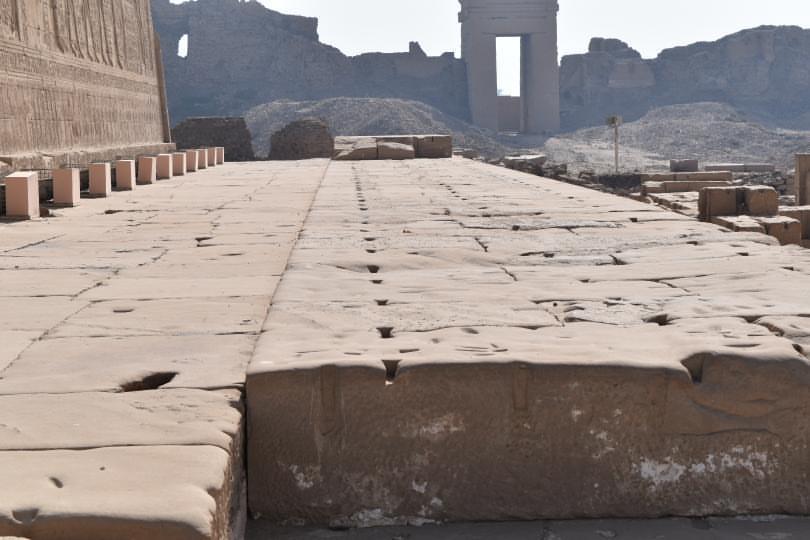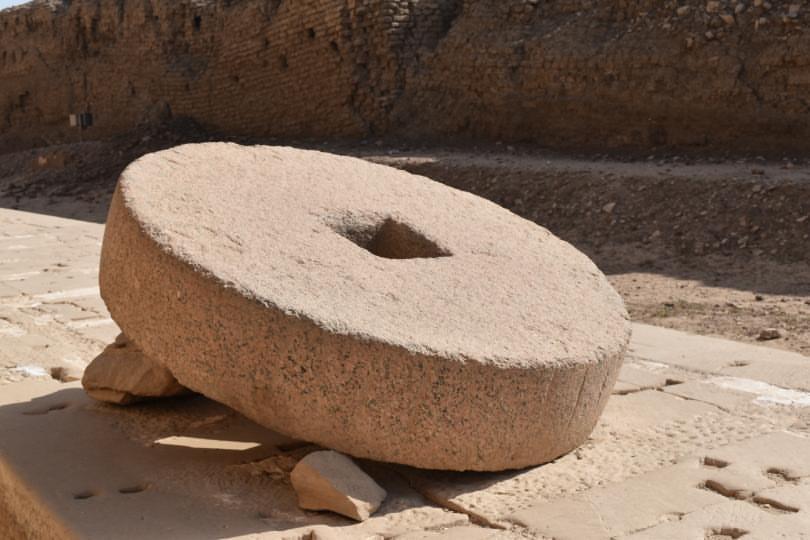The Temple of Hathor at Dendera
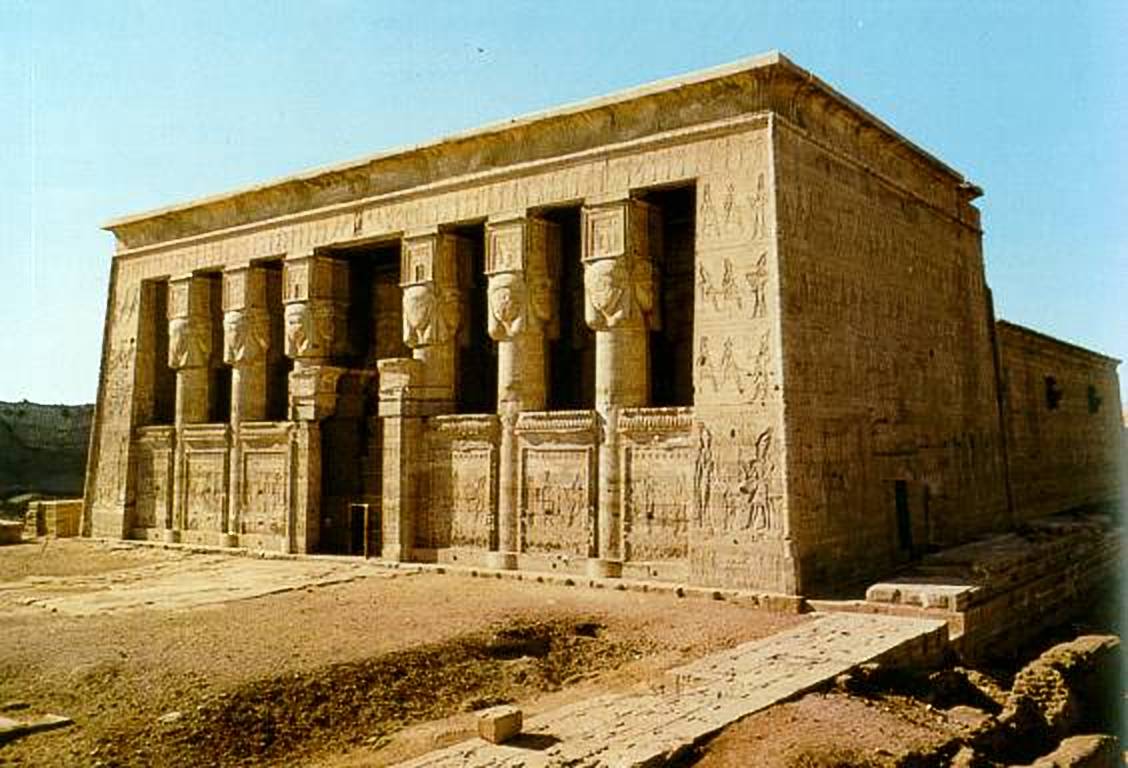
The Mysteries of Dendera: Exploring the Megalithic Calendar and the Dendera Light Bulb
Dendera, known as “the city of the goddess,” is situated on the west bank of the Nile, approximately 4 km north of Qena and 615 km from Cairo. It is best known for the famous temple dedicated to the goddess Hathor. The Dendera temple complex, with Hathor’s temple as one of the best-preserved structures in Egypt, spans approximately 40,000 square meters and is entirely enclosed by a brick wall.
The visible structures date back to the Ptolemaic period, with extensions from the Roman era (specifically during Emperor Tiberius’s reign). However, foundations of older buildings dating back to the reign of Cheops (4th Dynasty) have also been discovered. The entire temple is a marvel to explore, with each room intricately decorated. The front room at the main entrance is flanked by 24 columns, while the ceiling in the Great Vestibule honors Nut, the Egyptian Goddess of the Sky. This temple gained fame due to the enigmatic depictions found within its rooms: the Dendera light bulb and the zodiac.
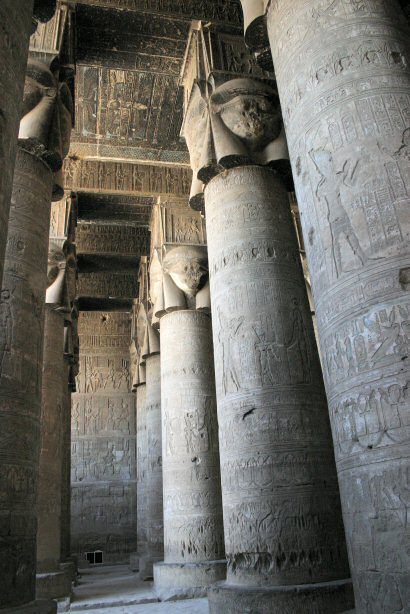
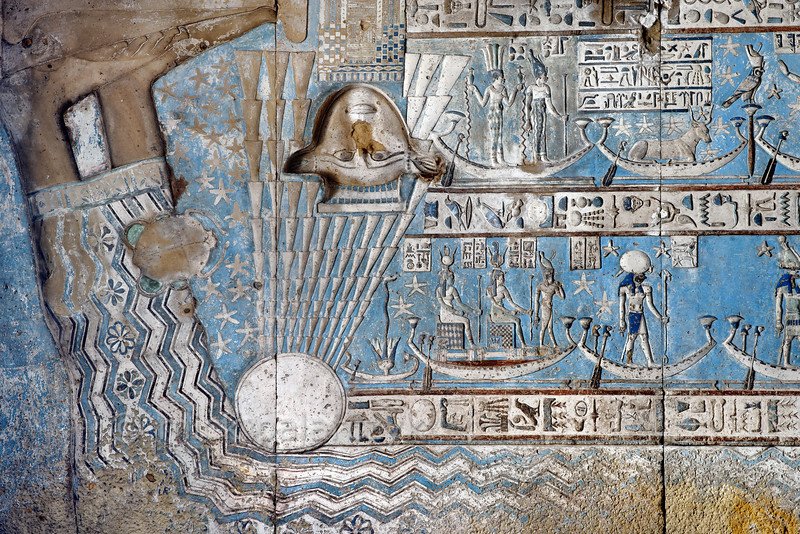
The Dendera Light Bulb

The so-called Dendera light bulbs are bas-reliefs with hieroglyphics discovered by French archaeologist Auguste Mariette in 1857. After clearing the sand, the large crypts beneath the temple revealed rooms with walls covered in carved stone slabs. These rooms, likely part of the temple’s earliest phase dating back to the 15th century BCE, support the current Ptolemaic and Roman-period structures. The carvings, from the Ptolemaic phase, have been interpreted by some scholars as representations of ancient incandescent lamps.
Among the bas-reliefs, there is also a depiction resembling the modern electrolysis process. Egyptologists interpret these bas-reliefs as symbolic elements within Egyptian mythology: the primordial snake emerging from a lotus flower is a well-known myth, and the support is a recurring symbol in Egyptian art, linked to Osiris and representing his spine.
Joseph Norman Lockyer suggested that these representations could be ancient Crookes tubes, devices capable of emitting radiation—an invention dating to about ten years after Mariette’s discovery. The stem of the lotus flower has been interpreted as an electric power cable; the support, representing Osiris’s spine, as an electric winding; and the snakes, as filaments within the Crookes tubes. A god holding two daggers, interpreted as a danger signal, aligns with the point where X-rays would emanate from the Crookes tube.
Additionally, the two Djeds, ritual objects frequently depicted in Egyptian art but whose function remains debated, are proposed to serve as ancient electrical insulators.
The Zodiac
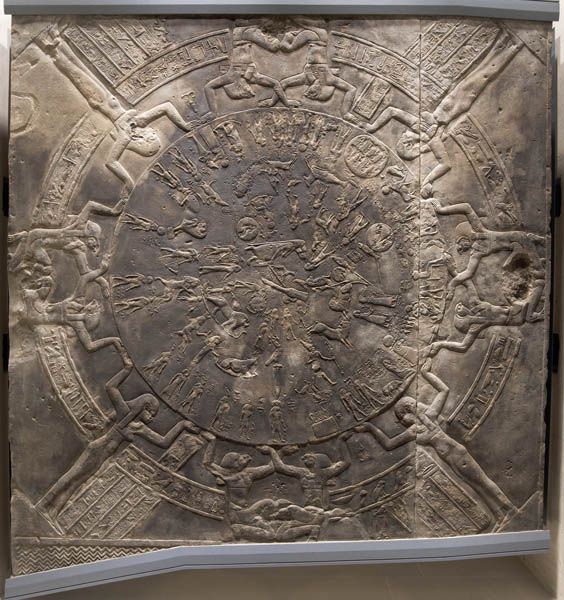

At the top of the structure, a small temple was used for rituals greeting the rising sun, along with the Chapel of Osiris.
Within this chapel lies a unique ceiling relief known as the Dendera Zodiac. This relief is considered the only complete “map” of the ancient Egyptian sky. The Dendera Zodiac is a planisphere—a star map featuring the 12 constellations of the zodiac, forming 36 decans of ten days each, and the planets. The decans, groups of first-magnitude stars, were integral to the ancient Egyptian calendar, which was based on lunar cycles and the heliacal rising of Sirius (Sothis).
The sky is depicted as a large disk supported by four celestial pillars in the form of women, interspersed with hawk-headed spirits. The first circle represents 36 spirits symbolizing the 360 days of the Egyptian year. The innermost section displays constellations and zodiac signs, some recognizable in their immediate iconographic forms (e.g., Aries, Taurus, Scorpio, Capricorn), though positioned differently from Greek and Western-Arab conventions. Others have distinctly Egyptian representations, such as Aquarius depicted as Hapy, the god of the Nile, bearing two vessels from which water flows.
Rogers noted similarities between the Dendera Zodiac and three surviving Seleucid zodiac tablets, both traceable to Mesopotamian kudurru representations. He concluded that the Dendera Zodiac is likely a complete copy of the Mesopotamian zodiac.
The Megalithic Structures Outside The Temple Of Hathor
The temple also features a megalithic flooring of massive blocks held together by metal clamps, similar to other megalithic structures worldwide, including megalithic stone wheels.
This flooring, resembling the pavement outside the pyramids on the Giza Plateau and the temples at Puma Punku, Bolivia, adds to the enigma. The “softened” appearance of the megalithic blocks further puzzles researchers.
The mysteries of Dendera, from the Dendera light bulb to the megalithic structures, continue to intrigue scholars and enthusiasts alike, offering a fascinating glimpse into an ancient civilization’s advanced knowledge and enigmatic practices.
